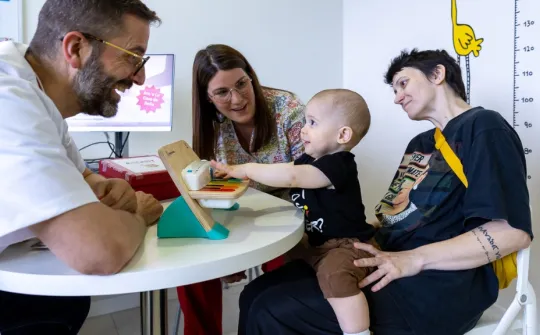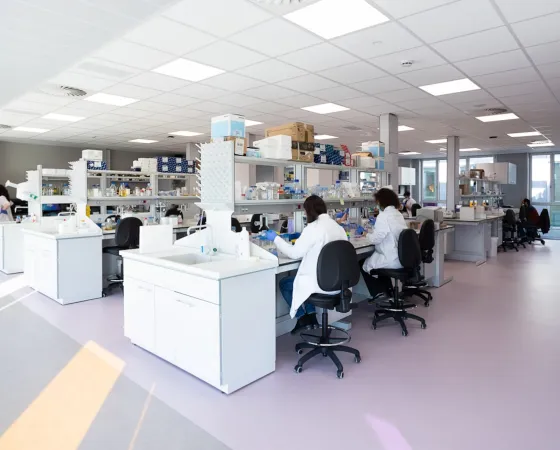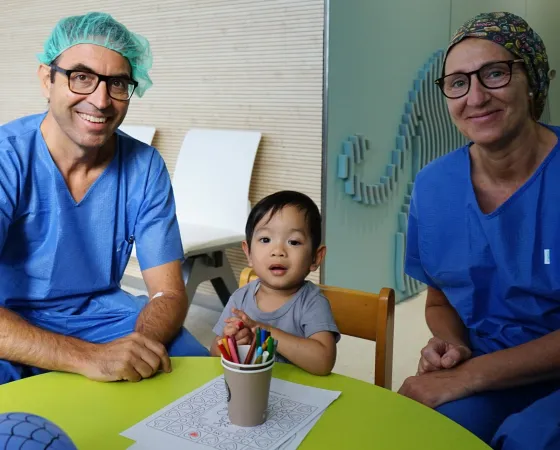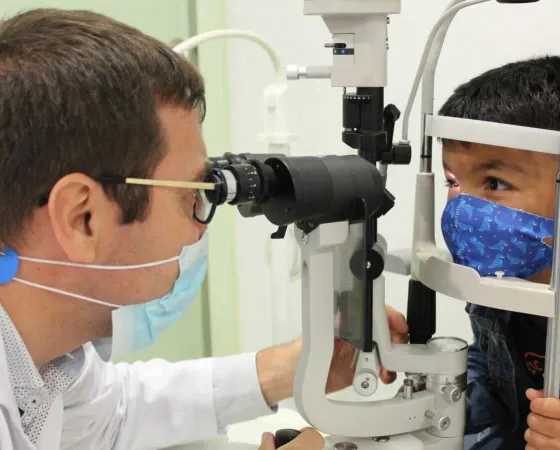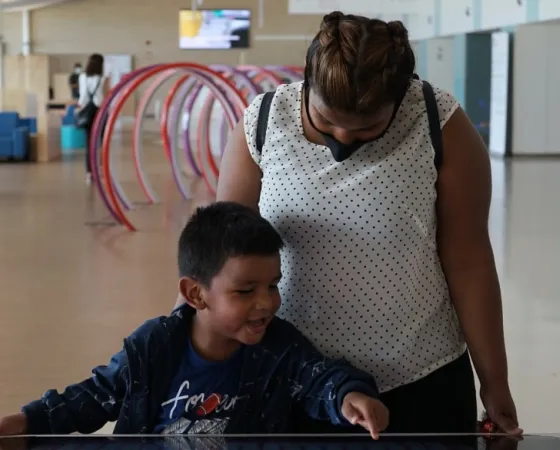Retinoblastoma is the most common eye tumour in children.
Description of the pathology
It originates from the developing retina and usually occurs in patients under the age of 3 years. Worldwide, around 8,000 children are diagnosed with retinoblastoma each year. Young sufferers run the risk of losing one or both eyes and of losing their sight completely if the tumour is not detected and treated as early as possible by a team specialised in this paediatric disease.
At the SJD Barcelona Children's Hospital we apply treatments adapted to the characteristics of each patient and we are known for our application of new therapies. Our cure rate is over 95%.
Why SJD Barcelona Children's Hospital?
We are a national reference centre accredited for the care of numerous children's eye diseases. We have a Paediatric intraocular tumour unit dedicated especially to the diagnosis and treatment of these pathologies, including retinoblastoma. We are also experts in extraocular tumours and orbital tumours.
We are one of the centres in Europe that treats the most cases of childhood cancer, with an average of 375 cases per year. To care for these children and to continue our research, we have created the Pediatric Cancer Center Barcelona, a monographic hospital for childhood cancer.
We have an exclusive paediatric tumour bank, which has great research potential.
We apply a translational research model that combines care and research so that patients can benefit from advanced treatments as soon as possible.
We offer long-term follow-up, which is particularly important for patients from outside Spain. We work with referring physicians from other centres in the home country as certain bilateral retinoblastomas present a risk for other tumours in adolescence, such as osteosarcoma.
Diagnosis
The following techniques are used to diagnose the tumour:
- Wide-field camera with state-of-the-art angiography.
- Anterior pole and ocular ultrasound.
- Optical coherence tomography (OCT).
- Microscopic study of disseminated disease.
The development of genetic sequencing techniques makes it possible to diagnose precisely what type of molecular alteration each patient's tumour has and to determine the appropriate therapy in each case.
Treatment
At the SJD Barcelona Children's Hospital we offer custom treatments and take a multidisciplinary approach to the disease, with the intervention of the best ophthalmologists, retina experts, radiotherapists and oncologists.
In addition to Systemic Chemotherapy, indicated in babies, we use the following treatments to eliminate or reduce the tumour.
In 2008, our centre was the first in Europe to introduce intra-arterial chemotherapy, which makes it possible to apply localised treatment to the tumour and preserve the eye affected by the disease.
Intra-arterial chemotherapy consists of introducing a catheter into an artery through the femoral artery and leading it to the ophthalmic artery to administer the chemotherapy directly to the eye. This technique allows the chemotherapy agents to reach the tumour better and makes it possible to reduce the dose of chemotherapy received by the body. This reduces adverse effects and improves the quality of life of the patient and their family.
It is currently the first option to preserve vision for most children with retinoblastoma. It is an efficacious, safe treatment and it is more precise than systemic or conventional chemotherapy as it acts directly on the tumour and is administered in small doses, reducing unwanted effects.
This is a complementary treatment indicated in cases where the tumour extends to the vitreous. Our centre has accumulated experience, as it was one of the first in Europe to start administering this treatment in 2012. In this case, the chemotherapy is administered directly into the vitreous humour by injection.
- Cryotherapy: Minimally invasive treatment that removes small anterior eye tumours using freezing.
- Thermotherapy: Heat treatment to destroy small posterior tumours of the eye.
- Brachytherapy: Localised radiotherapy treatment.
Research
We have several ongoing lines of research on retinoblastoma:
- Clinical trial with oncolytic virus VCN-01, unique in the world, for patients with retinoblastoma who do not respond to conventional treatment. Our researchers have developed a unique experimental therapy that involves genetically modifying an adenovirus so that it is able to identify, infect and multiply in cancer cells. This trial is open to inclusion of patients who meet the criteria (offered when all the above treatments fail).
- Retinoblastoma immunoenvironment. The project focuses on the study of tumour samples and seeks to discover what the tumour's immunoenvironment is like. Previous studies show that retinoblastoma is a tumour that is poor in immune system cell infiltration as the tumour secretes some proteins that create an immunosuppressive environment, so the tumour hides from the immune system and can grow more easily. The aim of the study is to try to pharmacologically block the proteins responsible for this process.
- Ongoing research with ICFO (Institute of Photonic Sciences) for the application of confocal microscopy and other imaging techniques to improve the diagnosis of retinoblastoma.
